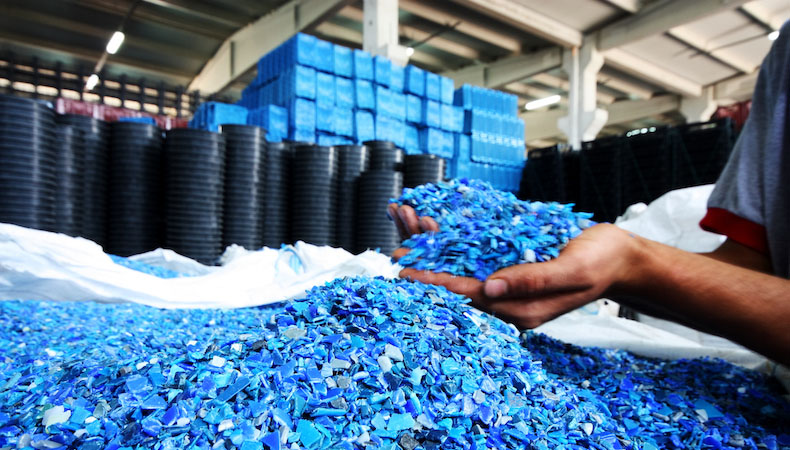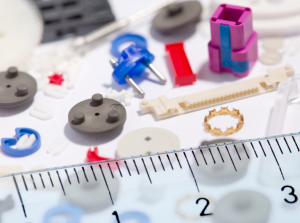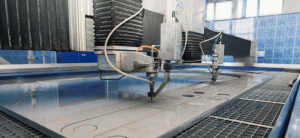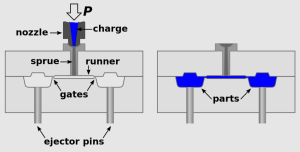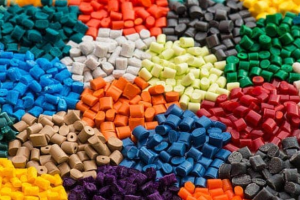Injection molding waste, including scrap, defective parts, and material contamination, is an unavoidable outcome of the manufacturing process. However, there are ways to minimize waste and its related costs. Below are some strategies to help companies reduce waste and improve both their environmental and economic performance.
Types of Injection Molding Waste
A. Scrap (Excess Material)
What it is: Scrap is the plastic material that’s not used in the final product. It includes:
- Runner material: The pathways that guide molten plastic into the mold cavities.
- Sprue: The main channel that delivers plastic to the runner.
- Flash: Extra plastic that spills over from the mold due to excess pressure or poor mold fit.
Impact: Scrap leads to wasted plastic, higher production costs, and a greater environmental impact if not recycled properly.
B. Defective Parts
What it is: Defective parts are those that fail to meet quality control standards or are poorly formed. This can result from:
- Incorrect temperature: If the temperature is too high or too low, defects can occur.
- Mold misalignment: Misalignment causes gaps and flash.
- Improper injection speed: Too fast or slow injection speeds can lead to underfilled or overfilled parts.
- Material defects: Contaminated or degraded raw materials can cause poor quality.
Impact: Defective parts are typically rejected, requiring reworking, recycling, or disposal, which reduces production efficiency and adds to waste.

Choose us for your custom injection molding needs and experience excellence in every detail. Our China-based factory provides innovative solutions, competitive pricing, and fast turnaround times. Get your custom quote now!
C. Material Contamination
What it is: Contamination happens when foreign particles or impurities mix with the plastic during molding. This can come from:
- Dirty equipment: Mold surfaces, hoppers, and machines can be contaminated with leftover materials.
- Moisture: Certain plastics are sensitive to moisture, which can degrade the material and lead to defects.
Impact: Contaminated plastic results in scrap and wasted material, affecting production quality and efficiency.
D. Energy Waste
What it is: Injection molding machines consume significant energy, and waste occurs in different ways:
- Excessive heating: Unnecessary energy use from heating molds and plastic too much.
- Idle time: Energy consumption when the machine isn’t running optimally.
Impact: Higher energy consumption raises production costs and increases the carbon footprint.
E. Water Waste
What it is: Water is used to cool molds and machinery. Improper cooling systems can lead to wasteful consumption.
Impact: Excessive water use increases operational costs and may affect sustainability goals, especially in water-scarce areas.
Causes of Injection Molding Waste
A. Improper Machine Settings
Issues like:
- Injection pressure: Too high or too low can lead to overpacking (excess material) or underpacking (defective parts).
- Mold temperature: Incorrect temperatures can cause defects like warping or insufficient fill.
- Cycle time: Short or long cycles can result in waste.
B. Inadequate Mold Design
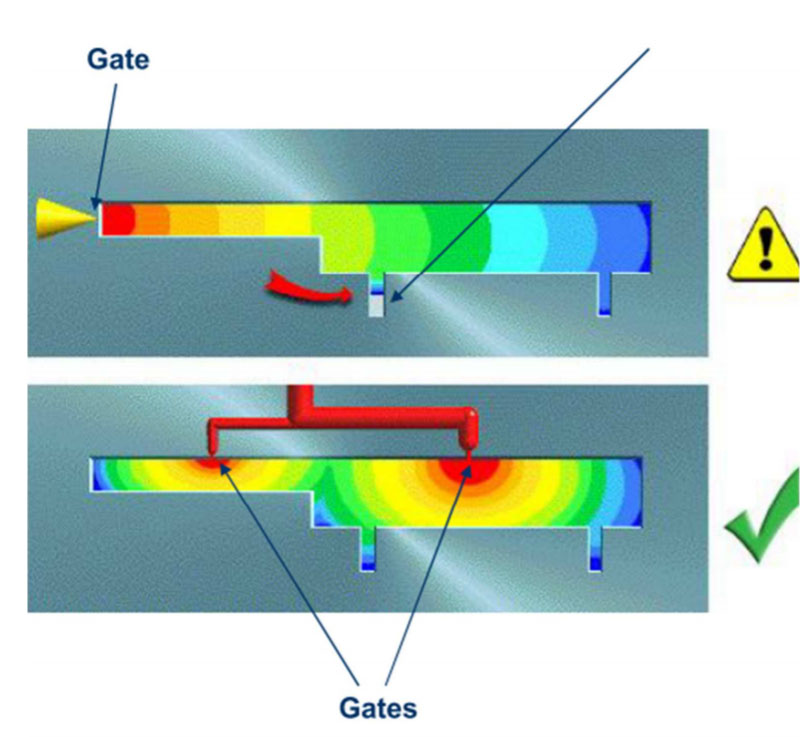
Problems like:
- Improper runner design: Poorly designed runners lead to excessive scrap.
- Mold misalignment: Causes flash and defective parts.
- Incorrect venting: Poor venting can create air pockets, leading to defects.
C. Material Issues
Problems like:
- Material degradation: Recycled or poorly stored materials can degrade, causing defects.
- Wrong material for the part: Using unsuitable materials leads to part failure.
- Moisture absorption: Certain plastics, like nylon and PET, absorb moisture, leading to defects.
D. Lack of Quality Control
Issues like:
- Inadequate monitoring: Without proper monitoring, issues like contamination or machine malfunctions may go unnoticed.
- Lack of maintenance: Poor machine and mold maintenance increases defects and scrap parts.
Solutions for Reducing Injection Molding Waste
A. Optimize Machine Settings
- Precise control: Use automated systems to monitor and adjust injection pressure, mold temperature, and cycle time to prevent waste.
- Lean Manufacturing: Implement Lean principles to reduce downtime, minimize scrap, and optimize resources.
B. Improve Mold Design
- Advanced molds: Invest in high-quality molds with efficient runner systems, proper venting, and tight tolerances to minimize waste.
- Modular molds: Adjustable molds can be customized for different designs, reducing waste from incorrect setups.
C. Material Management
- Material drying: Ensure moisture-sensitive materials are properly dried before injection to avoid degradation.
- Use high-quality materials: Select the right materials and store them correctly to minimize waste.
- Optimize material use: Calculate precise material requirements to minimize excess material.

As a leading mold injection manufacturer in China, we deliver superior molds for various industries. Our state-of-the-art facilities and expert team ensure top-notch quality and timely delivery. Contact us now for a competitive quote!
D. Implement Recycling Programs
- Recycling scrap: Collect and recycle scrap material like runners and sprues to reduce waste.
- Closed-loop systems: Recycle scrap or defective parts back into the production process.
- Regrind: Use ground-up material in non-critical parts to reduce reliance on virgin plastic.
E. Invest in High-Efficiency Machines
- Energy-efficient machines: Upgrade to newer, energy-efficient machines that consume less power.
- Automation: Automated systems improve precision, reduce cycle time, and minimize defects caused by human error.
F. Regular Maintenance and Quality Control
- Scheduled maintenance: Regular machine checks prevent defects and breakdowns.
- Real-time monitoring: Use real-time quality control systems to catch defects early, minimizing waste.
G. Proper Training
- Employee training: Equip staff with the skills to manage machine settings, troubleshoot issues, and reduce waste.
Environmental and Economic Benefits of Reducing Waste
A. Environmental Impact
- Less plastic waste: By minimizing scrap and defective parts, companies reduce their environmental footprint.
- Energy savings: Efficient energy use reduces environmental impact and power consumption.
- Water conservation: Better cooling systems help conserve water.
B. Economic Impact
- Cost savings: Reducing waste cuts material and energy costs.
- Higher profit margins: Waste reduction increases profits, especially in high-volume production.
- Sustainability: Waste reduction and recycling improve brand reputation and can provide competitive market advantages.
Conclusion
Although injection molding waste is an inevitable part of manufacturing, there are multiple ways to reduce it. By optimizing machine settings, improving mold design, managing materials efficiently, recycling, and maintaining high standards, manufacturers can reduce waste and boost both their environmental and economic performance. Addressing waste in the injection molding process not only promotes sustainability but also enhances operational efficiency and profitability.

